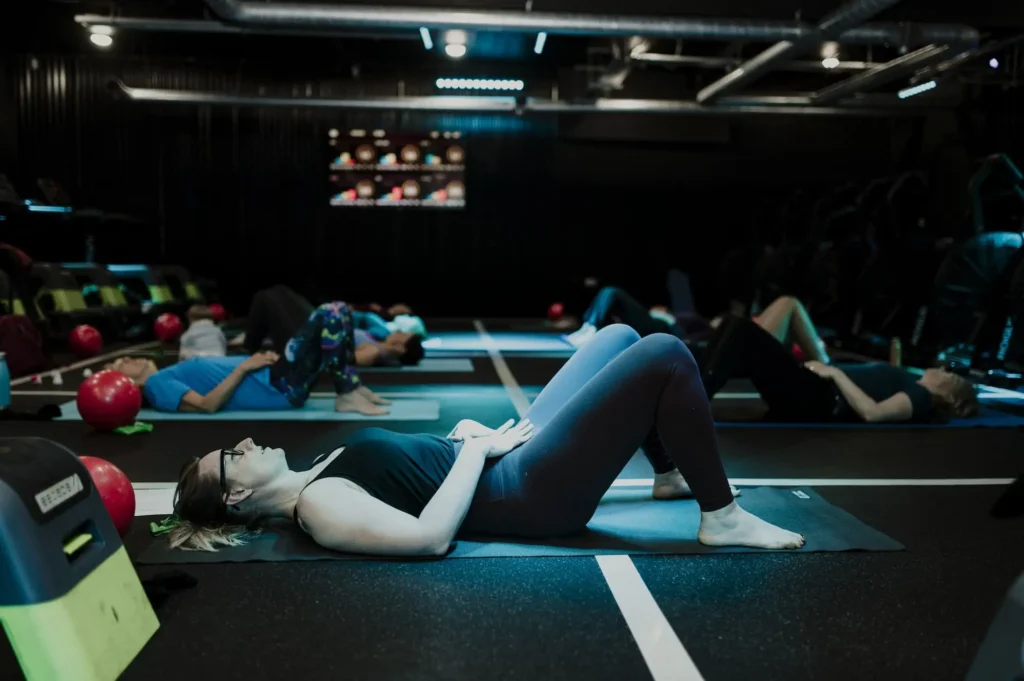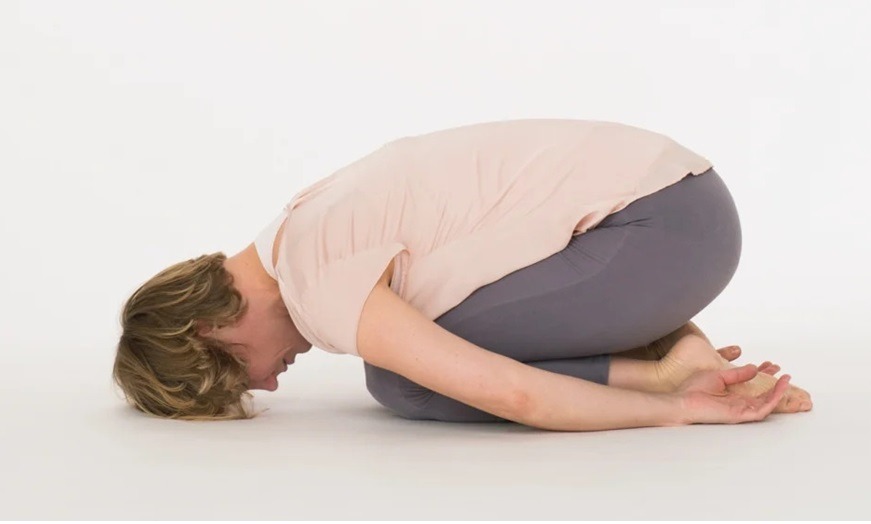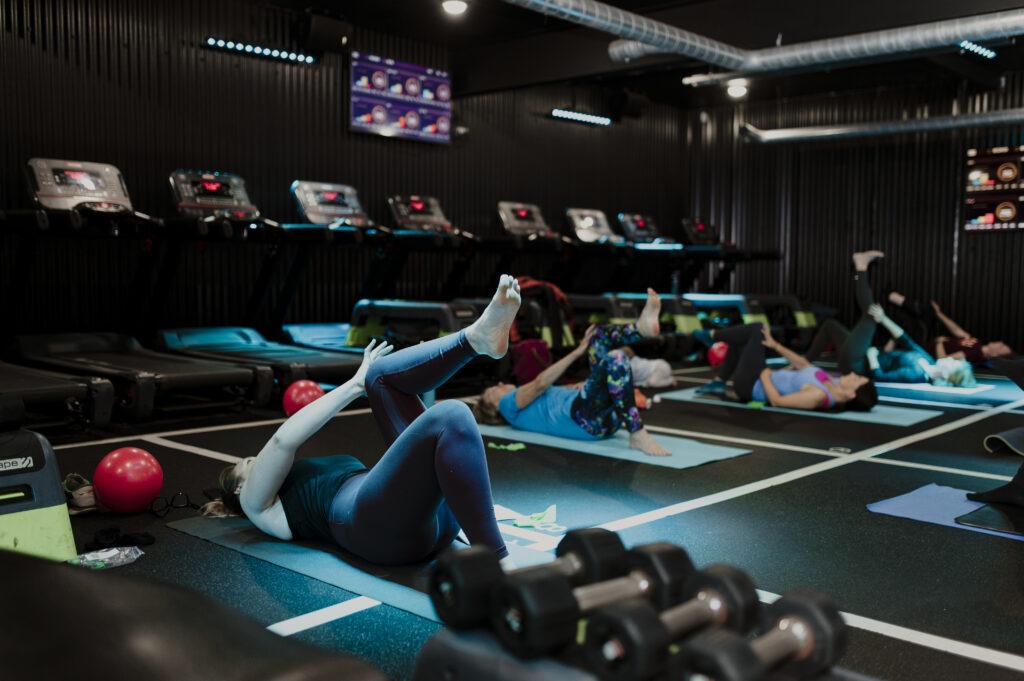Curious about how to do pelvic floor exercises? Pelvic floor exercises (also known as kegels) are a great way to help you overcome issues like leaking and pelvic pain, and improve prolapse symptoms. But, how do you actually do them!?
Thrive Physiotherapy has put together this easy-to-follow guide to teach you how to do pelvic floor exercises. You can do these exercises regularly, anywhere and any time, nobody need know you’re even doing them! They only take a few moments and don’t require any special equipment!
Before we talk about how to do pelvic floor exercises, let’s discuss why you should…

Why should I do pelvic floor exercises?
Throughout our lives, our pelvic floor is continuously working. It helps keep us upright, absorb shock (when we walk, run or cough), assist in breathing, and keeps our organs in place. It also gives us amazing orgasms!
At certain points in our lives, our pelvic floor may have to work harder. For example, during pregnancy and childbirth, a prolonged, bad cough, and even when wearing an ill-fitting bra (more on this later…). This can cause it to get tired and not work as efficiently.
Oestrogen also plays a key part in our pelvic health as it nourishes and supports the pelvic floor muscles.
Our Oestrogen levels continually fluctuate throughout our lives;
- on a monthly basis ie: our menstrual cycle
- a yearly basis, e.g. whilst going through puberty
- when breastfeeding
- as we enter our perimenopausal years.
When we have lower Oestrogen levels (in our cycle/menopause), the pelvic floor muscles may struggle to support us as efficiently. This can cause bladder leaks and pain.
Pelvic floor exercises improve the elasticity and strength of your muscles, so they work more efficiently for you. Strong pelvic muscles mean better continence (being able to hold your wee and poo), less pain (especially in the back, hips and pelvis) and reduced prolapse symptoms (a feeling of heaviness between your legs).
Other factors can impact this too, like pregnancy and menopause
How to do pelvic floor exercises
If you’re not sure how to do pelvic floor exercises, fear not. Pelvic floor exercises are very quick and easy to do! You can do them anywhere – at your desk, on the train, on the sofa and even in bed.
Just follow these simple steps;
- Take a deep breath in
- Focus on your back passage
- On your out-breath, squeeze as if you’re trying to stop yourself from passing wind
- Then bring your attention to your vagina. Squeeze it deeply as if (and forgive us for this, but it always gets the best squeeze!) you’re in a bath full of eels and you don’t want one going up!
- Then squeeze as if you’re trying to stop yourself from passing urine mid-flow
- On your next in-breath, relax the squeeze completely and take a couple of seconds to rest.
- When you feel fully relaxed, repeat the sequence
Once you’ve got the hang of how to squeeze, challenge yourself with quick 1-2 second squeezes, longer squeezes (holding for a few seconds) and squeezing when you cough/sneeze/stand up/ bend over.
That’s all there is to it!
Don’t forget to rest
As with any muscle, rest is very important after you exercise to help your muscles recover. So make sure you fully relax your pelvic floor muscles between each squeeze. This will allow them to work through their full range of movement.
NICE guidelines recommend doing sets of 10 short squeezes and 10 longer holds, 3 times a day. However, something is always better than nothing!
If you are struggling to feel your pelvic floor relax between squeezes, there are some great yoga poses for resting your pelvic floor muscles. Child’s pose is a good example; lower yourself down onto your knees and reach forward until your top half is as close to the floor as you can get. Reach your arms forward and breathe deeply.
This pose is a super stress reliever during the day too! Take a few moments to sit in child’s pose, breathing deeply.
You’ll feel your mind clear, your heart rate slow and your breathing deepen. That’s better…

Pelvic Strength Exercise Classes in Sheffield
While Kegels are a great starting point for pelvic floor health, they’re only one piece of the puzzle. At Thrive Physiotherapy, we believe in a whole-body approach that not only strengthens the pelvic floor but also integrates it into your everyday movements and activities. Here’s how we do it:
The Thrive 5-Step Approach:
- Pelvic floor exercises & Breath Work
Understanding the basics of pelvic floor activation and relaxation is essential. Pairing these with mindful breath work helps build a strong connection between your breath and your core, setting the foundation for a healthy pelvic floor.
- Functional Movement
The pelvic floor doesn’t work in isolation, so strengthening it through natural, everyday movements like squatting and bending is key. This step helps link your pelvic floor to the rest of your body.
- Single-Leg Exercises
Balance, stability, and control are the name of the game here. By practising single-leg exercises, you train your pelvic floor to work under different challenges, improving its coordination.
- Impact Preparation
Introducing gentle, low-impact movements like stepping or light jogging builds your pelvic floor’s resilience. This prepares your body for more demanding activities in a safe and gradual way.
- High-Intensity Readiness
Once the foundation is in place, it’s time to push boundaries. This step involves progressing to more dynamic movements and high-impact activities, helping you move confidently and symptom-free.

Sign up now!
At Thrive, we take a personalised approach to your pelvic health, ensuring every step of the journey is tailored to your needs. Ready to take control of your pelvic floor health? Get in touch to book your assessment today!
Fancy more of a work out? Our Pelvic Strength Exercise classes start again in January, book your spot here!
Please note: Classes are not suitable for new mums less than 6 weeks postnatally.